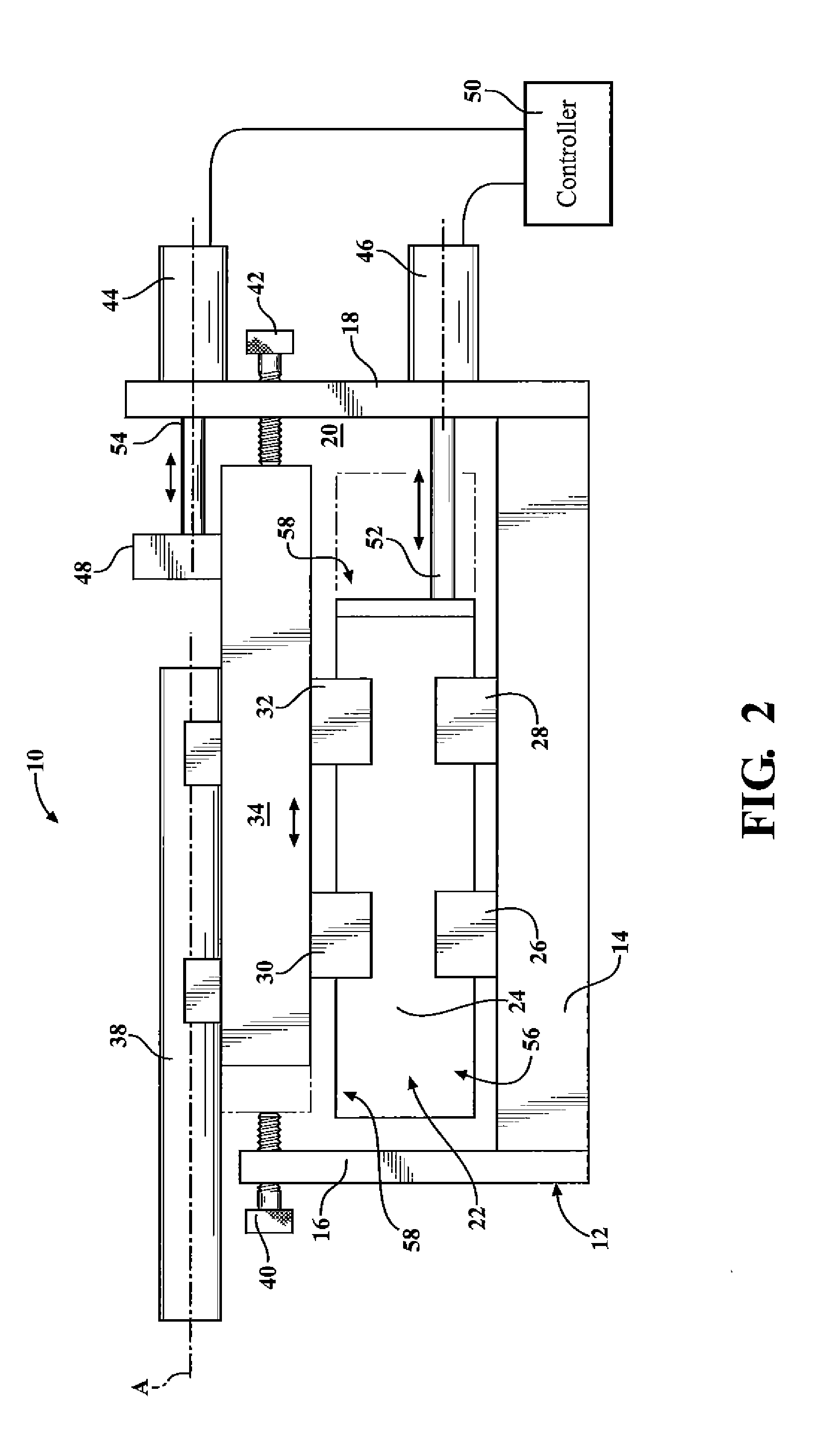Linear Bearing Assembly and Method
a technology of linear bearings and bearings, applied in the direction of sliding contact bearings, rigid support of bearings, mechanical apparatus, etc., can solve the problems of permanent deformation (denting) of the race surface, bearing damage, and small distance between objects, so as to prevent lubrication starvation and localized race wear, reduce static friction or “stiction”, and reduce lubrication starvation or ball/roller skidding during motion
- Summary
- Abstract
- Description
- Claims
- Application Information
AI Technical Summary
Benefits of technology
Problems solved by technology
Method used
Image
Examples
Embodiment Construction
[0026]Referring to the Figures, wherein like numerals indicate like or corresponding parts throughout the several views, a linear bearing assembly (the assembly) of the present invention is generally shown at 10 in FIGS. 1-3. The assembly 10 has numerous applications including and not limited to applications that require excessive and repetitive linear motions, i.e. “pick and place” robotic, applications, various testing devices and the like. The assembly 10 illustrated and described herewith is not intended to limit the scope of the present invention and is depicted to disclose concept as applicable to all of the aforementioned applications.
[0027]The assembly 10 includes a housing, generally indicated at 12 presenting a support surface or base 14 having a pair of walls 16, 18 extending upwardly therefrom to form a chamber 20. A rail device, generally indicated at 22, is positioned within the chamber 20 and is supported by the base 14. The rail device 22 includes a rail 24, a pair o...
PUM
| Property | Measurement | Unit |
|---|---|---|
| Time | aaaaa | aaaaa |
| Distance | aaaaa | aaaaa |
| Deformation enthalpy | aaaaa | aaaaa |
Abstract
Description
Claims
Application Information
 Login to View More
Login to View More - R&D
- Intellectual Property
- Life Sciences
- Materials
- Tech Scout
- Unparalleled Data Quality
- Higher Quality Content
- 60% Fewer Hallucinations
Browse by: Latest US Patents, China's latest patents, Technical Efficacy Thesaurus, Application Domain, Technology Topic, Popular Technical Reports.
© 2025 PatSnap. All rights reserved.Legal|Privacy policy|Modern Slavery Act Transparency Statement|Sitemap|About US| Contact US: help@patsnap.com



